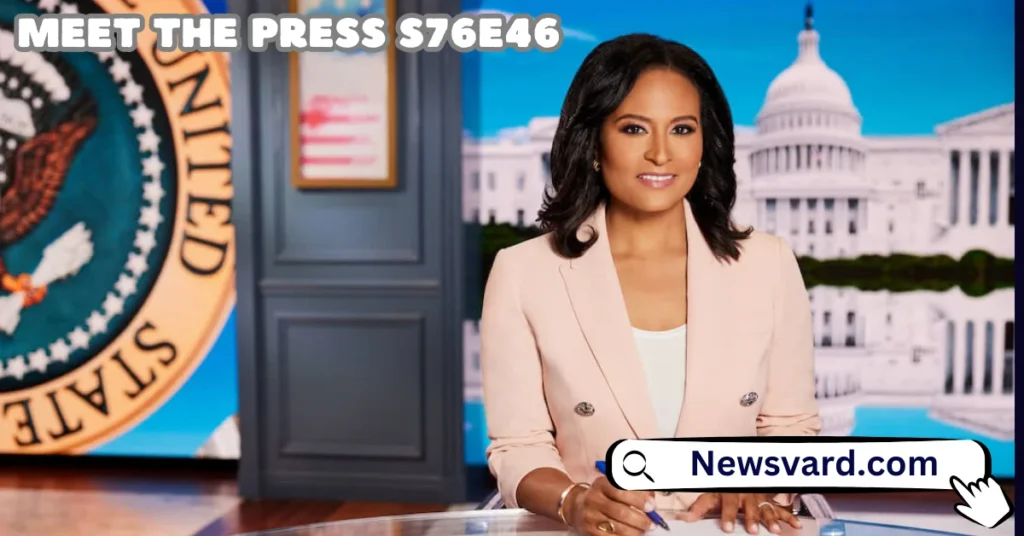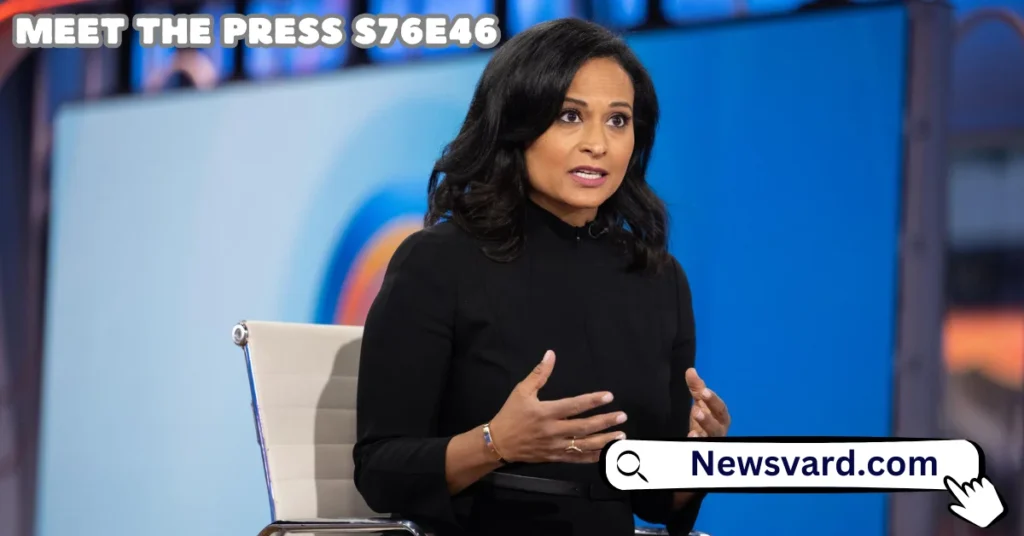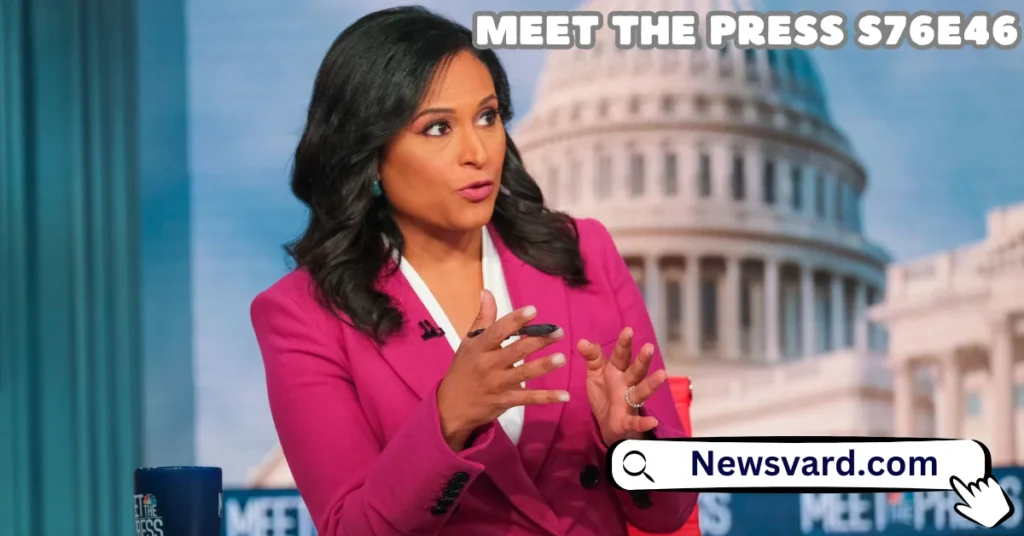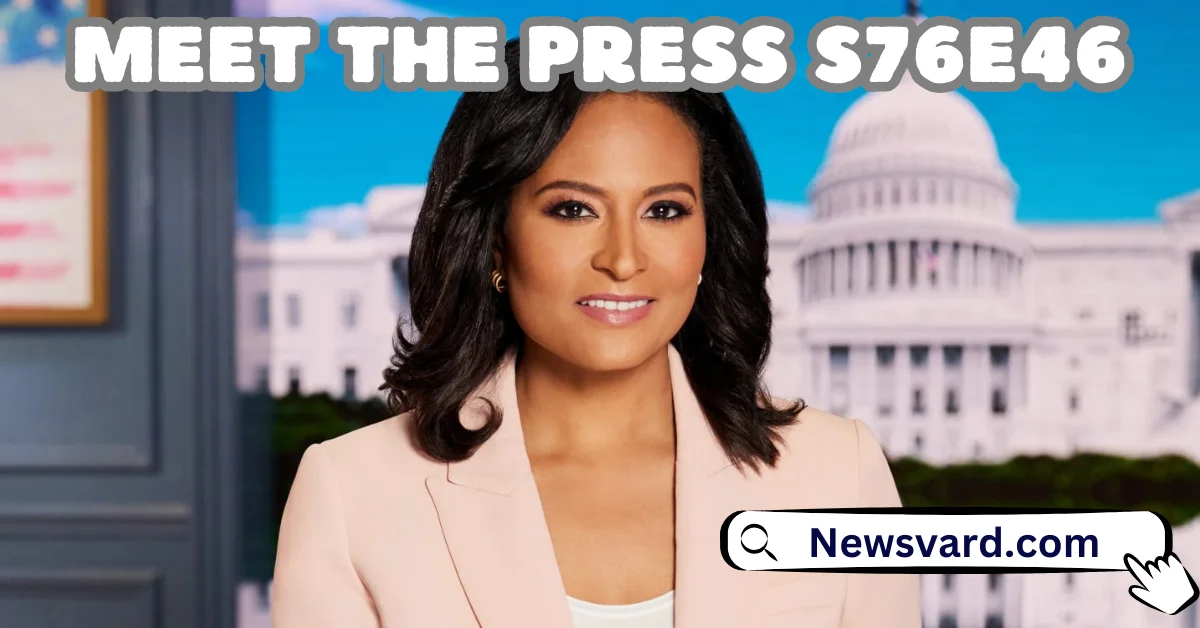Introduction
Meet the Press s76e46, the longest-going walks television display in statistics has grown to be a cornerstone of American journalism since its debut. For over seven a long term, it has been the most dependable platform for political discourse, recognized for its in-intensity interviews and rigorous thinking of public figures. Created in a generation while television was in its infancy, Meet the Press s76e46 set equal old for political talk shows and has maintained its relevance and effect through changing instances. This article explores the origins and early years of Meet the Press s76e46 highlighting its inception, layout, and the massive effect it has had on political journalism and public discourse.
Origins

Origins Meet the Press s76e46 first aired on November 6, 1947, on NBC. Created by pioneering journalist Martha Rountree, the display was initially radio software before transitioning to television. Rountree, who additionally served as the first moderator, envisioned a platform in which public figures could be held responsible through rigorous questioning. The display’s format, offering one-on-one interviews with outstanding political figures, became groundbreaking at the time and set the usual for Destiny news applications.
Transition from Radio to Television
Originally, Meet the Press s76e46 started as a radio application in 1945. The radio model was a pioneering effort in political journalism, but it turned into the transition to TV that marked a massive milestone. The show’s circulation on television was pushed via the growing effect of TV as a medium and the capacity to reach a larger target market. The layout changed into tailored for the brand new medium while preserving the center factors of in-depth interviews and panel discussions.
The Role of Martha Rountree
Martha Rountree played an important function in shaping the early identity of Meet the Press s76e46. As the primary moderator, she set the tone for the show’s layout and method. Her imaginative and prescient forum for candid and direct political communique set up a precedent for future information programs. Rountree’s leadership helped solidify the show’s popularity as a critical and credible platform for political discussion.
The Format and Early Guests
The early layout of Meet the Press featured a single guest, commonly an outstanding political parent, who changed into interviewed through a panel of newshounds. This layout allowed for complete and focused discussions on modern-day activities and coverage troubles. The inaugural episode’s visitor became James Farley, an extremely good political figure and previous Postmaster General. Farley’s look highlighted the show’s commitment to interviewing influential individuals and addressing large political topics.
Impact and Early Reception

From its inception, Meet the Press s76e46 garnered attention for its innovative method of political journalism. It speedy became acknowledged for its rigorous wondering and in-intensity evaluation, putting an excessive trend for other information programs. The display’s early fulfillment was marked by its potential to attract high-profile visitors and its popularity for imparting valuable insights into political procedures and selections.
The Early Years: 1947-1953
1. Inception and Format
Meet the Press s76e46 debuted on November 6, 1947, on NBC, marking a groundbreaking moment in television journalism. The show was first conceived as a radio program via Martha Rountree and has become one of the first to transition to TV. The format became progressive for its time, presenting a moderator and a panel of journalists accomplishing one-on-one interviews with outstanding political figures. This approach allowed for in-intensity exploration of present-day troubles and supplied a brand new model for political reporting.
2. Martha Rountree’s Leadership
Martha Rountree, a pioneering parent in television journalism, was the show’s first moderator. Her vision for Meet the press s76e46 changed into to create a platform in which public figures can be held responsible through rigorous wondering. Rountree’s management and backbone established the display’s recognition for tough, major interviews and set an excessive popularity for political journalism.
3. Lawrence Spivak and the Show’s Evolution
In 1953, Lawrence Spivak, a co-founder of the display and a distinguished panelist, succeeded Rountree as moderator. Spivak’s tenure marked a period of growth and improved influence for Meet the Press s76e46. Under his leadership, the show solidified its role as an essential discussion board for political discussion and debate. Spivak’s approach emphasized the importance of in-intensity thinking and critical evaluation, reinforcing the display’s dedication to keeping public figures responsible.
4. Landmark Interviews and Issues
The early years of Meet the Press s76e46 had been awesome for several landmark interviews that showcased the show’s determination to major in journalism:
- Senator Joseph McCarthy: One of the most memorable early interviews featured Senator Joseph McCarthy, recognized for his anti-Communist campaign. McCarthy’s contentious responses to the show’s probing questions highlighted the program’s role in scrutinizing powerful figures and debatable problems.
- The Red Scare: During the peak of the Red Scare, Meet the Press s76e46 provided a vital platform for discussing the political weather and the effect of anti-Communist rules on American society.
5. Impact on Journalism:
Meet the Press s76e46 revolutionized political journalism by presenting a format that emphasized direct interplay among newshounds and politicians. The show’s commitment to duty and transparency set a new standard for political reporting and motivated the improvement of other news applications. Its modern technique of interviews and dialogue helped form the role of television in political discourse and hooked up Meet the Press s76e46 a main voice in American journalism.
Legacy and Influence

The early success of Meet the Press s76e46 cemented its reputation as a leading platform for political talk. The display’s commitment to thorough and impartial reporting earned it popularity for integrity and reliability. Over the many years, Meet the Press s76e46 has persisted to evolve, adapting to adjustments in media and politics whilst preserving its middle standards.
Foundational Impact
- Setting the Standard for Political Interviews: Meet the Press s76e46 pioneered the layout of in-intensity, one-on-one interviews with political leaders and selection-makers. By offering a platform for direct questioning and duty, it installed a version for political communication shows and interviews that many packages have emulated on account of that.
- Advocacy for Informed Debate: The show has continually championed the significance of informed debate, encouraging viewers to interact with complicated political troubles. Its layout allows for comprehensive discussions, supporting educating the public on the nuances of political choices and regulations.
- Influence on Journalism Practices: Meet the Press s76e46 has had a profound effect on journalism practices, emphasizing the role of reporters as watchdogs who maintain public officers’ responsible. Its rigorous thinking and dedication to actual reporting have set an excessive standard for information insurance and integrity.
Notable Contributions
- Historic Interviews: Over the years, Meet the Press s76e46 has featured many landmark interviews that have shaped public understanding of massive activities. From high-profile politicians to arguable figures, the display has been a platform for essential discussions that have influenced public opinion and policy.
- Adapting to Media Changes: The show has adeptly navigated modifications inside the media landscape, evolving from its early days on radio to becoming a TV staple and later embracing digital structures. This adaptability has allowed Meet the Press s76e46 to stay applicable in an unexpectedly converting media environment.
- Influencing Public Discourse: By imparting a discussion board for numerous views and rigorous thinking, Meet the Press s76e46 has assisted in shaping public discourse. The display’s commitment to addressing pressing political issues has helped frame national conversations and affect policy debates.
Conclusion
Meet the Press s76e46 laid the muse for what would come to be an enduring group in American journalism. From its inception via Martha Rountree to its evolution under Lawrence Spivak, the show’s willpower to hard-hitting journalism and knowledgeable debate has left an indelible mark on the media panorama. As Meet the Press s76e46 maintains to navigate the complexities of present-day journalism, its legacy of integrity and accountability stays as relevant today as it changed into in 1947.
Read More: TanyaKaurXoxo: A Journey Through the World of Digital Creativity





